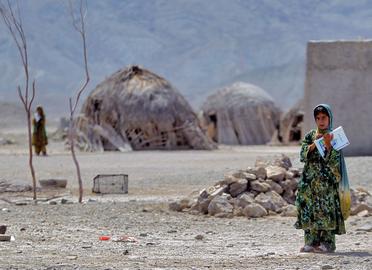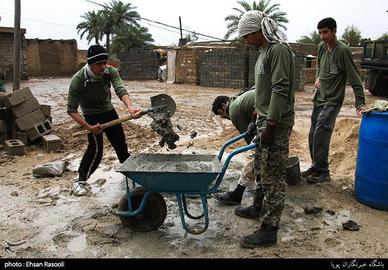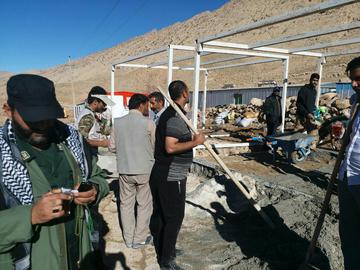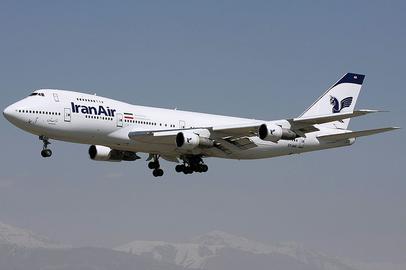For years, the Revolutionary Guards (IRGC) limited its well-financed fight against poverty — or, as they call it “de-deprivation” — to a radius of 70 kilometers around their bases. Today, however, they have achieved a virtual monopoly on all projects tasked with helping develop underprivileged areas in Iran.
For years, the IRGC was active in underprivileged areas within the framework of the “Basiji Jihad Camps,” which were supervised by its Khatam al-Anbiya Construction Headquarters (KAA). But in 2016, it launched something called the De-Deprivation Headquarters, also known as the Progress and Development Headquarters (PDH), which falls under the supervision of the Guards’ high command. At that stage, all other so-called “headquarters” at every level were put under the control of this new organization.
Next, the IRGC announced that the Imam Khomeini Relief Committee, the Barakat Foundation, the Ministry of Cooperatives, Labor and Social Welfare and a number of other institutions would work under the watch of the PDH in deprived areas, with the PDH acting as a coordinator between the organizations.
After the IRGC succeeded in monopolizing the oversight of projects to help underprivileged areas, it fundamentally changed the framework of its related activities, redefining projects as either “development” or “non-development” projects.
Statistics gleaned from IRGC-affiliated institutions show that during 10 months in 2017, the Revolutionary Guards were running more than 67,980 development projects in underprivileged areas, with a total budget of 573.577 billion tomans, close to $135 million. This data also shows that, during the same period, the IRGC had more than a million “non-development” projects with a budget of 250.854 billion tomans, or around $6 million.
But where does all this money come from? Not from the IRGC itself. A considerable portion of it came from the Imam Khomeini Relief Committee, the Welfare Organization, the Barakat Foundation and other institutions. In other words, every year these institutions pay the Guards a hefty sum so that the military organization can implement its own “de-deprivation” projects. Exact figures on these sums are not available.
The IRGC reports that in the 10 months in question, it built more than 14,090 housing units for underprivileged people and sent more than 8,386 trailers to be used as temporary shelters by the victims of the 2017 earthquake in the province of Kermanshah. According to the Guards, part of the money was spent to build or repair 7,924 mosques and to build 20,475 sources of clean water in deprived areas.
Breeding Quails and Fish
The IRGC also reports that it spent part of its money on building various facilities such as offices for the clergy in Iranian villages, purification systems, Islamic morgues, roads, sports facilities, greenhouses, bathhouses, memorials to martyrs, flood walls, breakwaters, quail breeding facilities and ponds for breeding fish. The dredging or digging subterranean aqueducts known as qanats, water delivery, the clearing of agricultural lands, and electrification were also made possible through these funds.
The Guards’ “non-development” projects have mostly been carried out in underdeveloped border areas, or in remote or “sensitive” areas. These initiatives included donations of dowries for 18,963 brides, 95,420 care packages, stationery to needy students, backpacks for shepherds and medicine for patients afflicted with hard-to-cure illnesses.
Other “non-development” activities carried out by the IRGC included the creation of field hospitals and the donation of medical care packages. According to the IRGC, field hospitals have been its most expensive undertaking in terms of supplying healthcare, and that in the 10 months of activities recorded in 2017, it spent 86.6 billion tomans, or $16.2 million, on these initiatives.
Helping underprivileged students has been one of the most important stated goals of the Guards’ “de-deprivation” project. During the 10 months in question, the Guards signed contracts to build 1,028 schools at the cost of 16.18 billion tomans, close to $4 million, some of which have been completed. Of this number of schools, 255 are located in the Sistan and Baluchistan province, 148 in West Azerbaijan and 136 in Kurdistan.
In the same time period, the Guards signed a contract worth 16.621 billion tomans, close to $4 million, to provide students in unprivileged areas with 221,622 study-related packages. Of this number, 51,450 packages went to Sistan and Baluchistan, 22,120 to Khuzestan, 21,447 to Fars and 20,200 to Razavi Khorasan.
The Guards, of course, expect political returns for investing such a considerable sum in underprivileged areas. In the presidential election of 2017, the IGRC tried its best to turn the people of these areas under their control against Hassan Rouhani but, in the end, they failed. Rouhani was elected to be the president of the Islamic Republic for a second term.
visit the accountability section
In this section of Iran Wire, you can contact the officials and launch your campaign for various problems




























comments